Fortunately, Berlin's Travel Pass takes you from Zone C (where the airport is) to Zone A, which is the city-center. Costing €43 each, we purchased 7-day Travel Passes for unlimited rides on Berlin's trams, trains, Metro, buses, ferries, and regional trains to nearby attractions. (That is an awesome value because ferries and regional trains are not included in NYC's 7-day Metro Card. Greedily, they cost extra). We confirmed the details with a uniformed attendant at the ticket vending machines. There were three attendants, and they spoke English.
Thankfully, ticket machines, train names, and signs are in German and English.
Brainwashed from their "car culture", Americans may want to drive themselves everywhere... but cars are not needed. It is better to use the marvelous public transit and your own two feet.
We got aboard a double-decker train. Many trains and Metros in Germany keep their doors closed, so passengers must press a button to open them.
Alas, the train was stupidly designed with barely any room for luggage. Above the seats, the luggage racks are so close to the ceiling that you can only store a briefcase on them. Duffle bags, carry-on baggage, and suitcases will not fit. Unlike trains in England and Italy, there was only one luggage rack for each coach, and it only had one shelf! Consequently, passengers kept their suitcases in the aisles, which made it challenging to pass through. Seats were configured as groupings of 2's and 4's. They had cup holders and garbage bins, but there were no electric outlets! That was a letdown.

Unlike any other train we used in Europe—and resembling what we use in New York—the train was idiotically created with wheel wells infringing on the passenger space. So, riders with seats against the windows had to endure the 20-minute ride with one of their legs up against their bodies. That is dumb.
Unlike London's Heathrow Express that zoomed along the countryside, the German train was sluggish. Mercifully, the scenery was pleasant.
Seen below, Berlin and its airport are situated within the State of Brandenburg, which has 18 districts.
Formerly, the state was the Province of Brandenburg.
Eventually becoming the main part of the Kingdom of Prussia, it was initially a principality within the Holy Roman Empire from 1157 until 1806. The principality was named the Margraviate of Brandenburg because it was ruled by aristocrats who were titled as a margrave (marquis). In German, margrave meant "nobleman of a borderland". In 1356, the pope decreed that the margraves were elevated to the rank of prince-electors, which meant that they could elect each Holy Roman Emperor (even though popes had big influence). That upgraded the region's name to the Electorate of Brandenburg. In 1411 the noble House of Hohenzollern was bestowed with hereditary control over it, as a reward from the Holy Roman Emperor. The family's first margrave and prince-elector was Frederick I, and his knights were tremendous. He created his residence in Berlin, and that accelerated Berlin's prestige.
The Holy Roman Emperor of 1701 allowed Frederick III to elevate Prussia to the status of a kingdom, and he crowned himself as King Frederick I of Prussia. (That is significant later).
Twenty minutes later, we arrived in Berlin, and this is its coat of arms.
(Initially, the Brandenburg eagle was in the logo, but a bear became popular in 1280 and remains. The bear is now the capital's mascot. In the sixth part of this travel blog, I'll show you a few "Friendship Bears" that are public artwork).
With 3.7 million residents, Berlin is the most-populated city in the European Union—followed by Madrid and Rome (we visited both previously). Including its commuters, the city-center has a population of 4.5 million. The city's name derives from the Slavic word for "swamp", which gives it a similar origin as Versailles, Hong Kong, and much of Manhattan.
(*Trivia: In the USA, there are places named Berlin in 23 states, and they are all named for the capital of Germany).
We arrived in the Central Station. It is a wondrous skylit facility that is a multi-level hub for all of the trains, only three tram routes, and some aboveground Metro routes. Alas, we were surprised that only one of the city's underground Metro routes goes there, and it is not a main line. (Berlin's Metro has underground trains named U-Bahn and aboveground ones named S-Bahn).





The first thing we did was go to the apothecary (pharmacy) and buy a specific type of COVID face mask because websites of Berlin's museums indicated that they were mandatory for admittance. Remembering a similar situation at Vatican City, we obeyed. (Yet, we never used them because our regular masks were sufficient, so that was a misleading waste of money). Next, we went to a currency machine for Euros to spend. Lewis has some German clients, and they corroborated the information that I learned online that many places in Germany only accept cash and do not use credit/debit cards. That is shocking for a first-world nation, but it's true.
I warn you that signage for public transportation is worse than in Finland. Signs are stupidly placed—so they are not apparent or helpful—and there are few of them. Many signs have directional arrows that conflict with their written instructions. We overheard tourists—including Germans visiting their capital—complaining about getting lost and a lack of signs. At transit stations and roadways, we often overheard people complaining that signs were confusing and unclear.
Making things worse, Google Maps malfunctions atrociously in Berlin! It is utterly terrible and useless for identifying mass transit in Germany. Even from my iMac at home, whenever I used it to "virtually explore" the city, it failed to identify Metro stations, transit stops, transit transfer points, and connections for public transportation. I "zoomed in" as far as I could, but Google Maps would not reveal Metro stations, bus stops, or tram stops. Then, I cross-referenced with Berlin's transit maps to copy the names of the stations that I wanted to find. Only when I typed the specific name into Google Maps, did it suddenly reveal the station! Perhaps that is a residual revenge by Google because it was sued for stealing the mapping software from two Germans who created TerraVision. Released in 2021, a Netflix miniseries titled The Billion Dollar Code described the Germans in their failed attempt to regain credit for designing the system that Google Earth supposedly uses. If true, I am not surprised that another American tech conglomerate was founded on stolen ideas. Google claims that its "Street View" and map items are outdated (from 12 years ago in 2010!) because Germany is too protective of its privacy.
Germany is like China in its protection of citizens' privacy against America's pirating corporations, such as Google and Facebook, who try to steal data for profit. During our trip, whenever I accessed a Google-operated webpage, Germany's internet servers issued helpful warnings to me: "This website installs cookies from Google to offer services and analyze access. Your IP address and username are shared with Google, along with performance and security metrics. Cases of abuse identified." (In the USA, greedy corporate webpages install "tracking cookies" on your device—without your permission—and hide them, so you're expected to find them and endure convoluted challenges to remove them. In Asia and Europe, most websites never do that and ask permission before any analytical or marketing cookies are installed.) I'm certain that Google dislikes Germany's warnings to website users, and it's easy to imagine them pinpointing the nation for revenge.
In the entire world, Germany seems to be the only country with huge lapses within Google! Proving Google to be a liar, Apple Maps created effective depictions of Germany. We wish that we knew that before we arrived in Germany.
Consequently, trying to navigate through Berlin is tremendously harder for Americans because of Google's failings. We abandoned several exploring ideas because we couldn't find where we needed to go, and Berlin's transit signs are unhelpful.
Another dumb holdover from its American/British Occupation is the fact that only half of the city has a tram network. Begun in 1865, Berlin has the world's third-largest tram network, but now it only exists in the northeast. After World War Two, it was halved. When Soviet-controlled Russia occupied East Berlin, it maintained the city's tramways as efficient low-cost public transportation. However, America was/is notoriously controlled by its Big Three Automakers who uprooted the tram systems in American cities. Like an infectious fungus, America implemented that bad idea in West Berlin that it controlled. So, West Berlin lost its trams, and people were forced to buy expensive cars (and gasoline). Berlin was reunited in 1989, but it inexplicably did not reinstate its trams for the western half.
Only in 2009 did one tram route get rebuilt to reach the Central Station. Now, there are three tram routes that go there.
During our seven days, we did not use the trams or buses. Nonetheless, the electric buses are admirably manufactured by Mercedes-Benz. That provides a luxurious commute.
Please play this brief video and turn the sound on to hear how impressively quiet the buses are. You wouldn't know one was there :-)
For a sharp comparison, listen to the sounds of Manhattan buses, which rumble loudly like Soviet-era tanks and cause pedestrians to shout at each other to be heard...
NYC is like a third-world country.
Thankfully, taxi stands are plentiful in Berlin. That type of modern civility is something that New York lacks. It was wonderful to use them. Sensibly, it makes it easy to get a cab. Due to an uncaring lack of enforcement and infrastructure for taxis, New Yorkers are compelled to stand outside on street corners, in all types of weather, and try to wave at a taxi. NYC is the world's most expensive city to live in, so that is unforgivable, yet NYC's hugely-corrupt Taxi & Limousine Commission (with an annual budget of $68 million) hasn't remedied that mess since it was formed in 1971. Every year of our lives as residents in NYC, Lewis and I experienced frustration when trying to hail cabs: most bypassed us—especially during bad weather and holidays. It might require 20 minutes to hail a taxi, and they are usually dirty inside. Whereas exasperated people in NY are often refused service by hideous taxi drivers who illegally don't deign to go to the person's destination, Berlin's cabbies drove us everywhere that we wanted. More impressive, Germany has a non-tipping culture, so taxi drivers do their job because it is the right thing to do. In Berlin, taxi lines are created outside of department stores, concert halls, opera houses, shopping malls, train stations, and any place where crowds might congregate. Taxis in the line move ahead in an orderly style. You never have to wait for one. That makes it nice to travel throughout the capital.
Furthermore, most taxis in Germany are Mercedes-Benzes... at no additional cost. In the USA, using a taxi that is a Mercedes requires a exorbitant fee, and ride-share companies like Uber add a "luxury surcharge": doubling the usual "minimum fare", doubling the "base fare", and doubling the "per kilometer fare". In Germany, using a Mercedes taxi is an everyday convenience of reliability, safety, and comfort. We loved that. Our rides cost €8-12. Seen below, a spacious Benz cradled us from the station...
... to our hotel.
When the driver accelerated his excellent engine, we barely heard any noise, and the sedan's suspension prevented any motion or rocking in our seats. The car made a three-point-turn and zoomed onward, yet we weren't jostled, and that is rare in the vast USA. The car seemed to hug the road, and German roads are superior to any that I used anywhere in America: no cracks, potholes, separated seams, litter, or road debris.
Smartly, there is a vehicular tunnel under the city's main 520-acre park, named Tiergarten. The inner-city park has a regal history.
In 1527, Tiergarten (Animal Garden), began as a royal hunting ground for the Elector of Brandenburg: the monarch of the region. In the 1720s, Frederick Wilhelm I added plazas and boulevards to transition the royal property for public use. His son, King Frederick the Great, opened the first public gardens in 1740, and he commanded that the fences be removed from the park for general access. The visionary king transformed it into a grand "pleasure garden" for the citizenry. Using the popular Baroque style, he deftly added geometric flowerbeds, mazes, espaliers, and ornamental ponds... similar to his ingenious gardening at Sanssouci Palace. Unique in that era, walkways were intersected with seating areas at fountains, offering guests a change of pace and places to chat. In 1833, King Frederick III employed Sanssouci's gardener to update the park with English flair: adding streams, ponds, and bridges to small islands. In 1881, Emperor Wilhelm I made his "royal possession" into a purely public space.
The tunnel's length is 2.4 km, and it is immaculate and well-maintained.
It reduces traffic and noise from the park. (Nothing like that exists for Manhattan's Central Park).
*Later, we saw the pastural beauty of the park, and we admired the gold-topped Victory Column, erected in 1873 for Prussia's victories over Denmark, Austria, and France.
During our time in Germany, we never saw a traffic jam, and we never saw traffic congestion during "Rush Hour" commutes. Clearly, Germans know how to drive better, and their traffic infrastructure is smarter. Watch my videos to see the stupidity of highways in New York City: drivers are expected to swerve across six lanes to access a toll bridge...
Imagine how congested that becomes during commuting hours! As the nation's richest city, it should do a better job to rid itself of unmanageable traffic... but it doesn't care, so drivers suffer.
It's like a third-world country...
Our taxi emerged from the tunnel and crossed over the Landwehr Canal. Originally, it was a medieval fortification around the city walls.
Our taxi crossed the Köthener Brücke (Kothener Bridge), which is used by the Metro. We saw our hotel ahead, glistening in the sunset.
Lewis relied on Booking.com to choose the High Park Hotel. As a corner-property, it is beautifully situated against the water, with Mendelssohn-Bartholdy Park on the east side, and Tilla Durieux Park on the west side.
Seen above, Tilla Durieux Park is a 200-meter-long greenway. Previously, it was a stretch of empty space against the Berlin Wall. In fact, the entire area of Potsdamer Platz (directly north of the hotel) was impacted. (Potsdamer Platz began in 1685 when Frederick William, Duke of Prussia, allowed Jewish refugees from Austria to settle there). Initially, it was a lively area where all the trams convened, full of shops and cafes.
After WWII decimated the area, it was not repaired. Empty lots remained vacant, and tram tracks ended in the rubble.
It was used as a border between the areas that were occupied by two of Berlin's conquerers: The Soviet Union and the United States. To create containment of capitalistic consumerism, the Soviets erected a wall around the American/British/French zone. It bisected Potsdamer Platz.
After the fall of the Berlin Wall, new stylish architecture came.
That is where we chose to stay: a junction of vibrancy near Potsdamer Platz.
Berlin maintains portions of the historic (albeit hated) Wall...
...as well as historical markers to indicate where the barrier stood.
Seen below, the greenway gave a pleasant vibe to the rekindled area, and our hotel faced it.
*Later, we noticed gigantic seesaws in the park. The park is favored by joggers, skateboarders, picnickers, and dog-walkers.
Below is my first photo of our 4-star hotel.
Unlike NYC taxi drivers, ours exited his vehicle to load and unload our suitcases from the trunk. He never expected a tip, but Lewis rounded-up the fare as a gratuity.
(Luckily, a taxi stand existed—night and day—outside a neighboring hotel, and we used it several times. On our final day, it made our trip to the Central Station as convenient as possible).
Our hotel was wisely-chosen for its many conveniences and comforts. The High Park Hotel is located in Berlin's best neighborhood: Mitte (Middle).
Mitte is the perfect location to stay in because it contains many attractions and has adjacency to retail areas and parks. It is connected by all strata of public transportation. It contains Germany's governmental district: the historic Reichstag Building (for parliament), Bellevue Palace (for the federal president—who is different than the chancellor), the Chancellery, and the diplomatic Embassy Quarter. The Brandenburg Gate and Museum Island are there, as is the Berlin Cathedral. Mitte stretches eastward to Alexanderplatz, where the Fernsehturm (TV Tower) is Germany's tallest building. Berlin has 12 boroughs, and Mitte was one of two that were divided by the Berlin Wall, so it has many historical markers.
The hotel had a prestigious newly-built address in a 13-level building on a street named Gabriele Tergit Promenade. (The street was named for a Jewish German-British journalist born in 1894. Due to her criticism of Nazis, she fled their capture in 1933 and lived in London).
Seen below, we entered the hotel and received a greeting from a porter who tidied the lobby. Thankfully, Lewis and I already taught ourselves some basic German phrases:
Hallo = Hello
Tschüss (pronounced "Chuss") = Goodbye
[Ciao is commonly used in Berlin, too].
Bitte (Bit-eh) = Please
Dánkeschoen (Danka shane) = Thank you
Similar to Chinese and Japanese cultures, Germans use formality when addressing people. If Mrs. Smith is a corporate director they say, "Director Smith". Politely, they use a formal style until they are invited to use an informal one. In Germany, Lewis' name is "Ludwig". My named doesn't translate, so it remained as "Kenneth"; it originated with ancient Gaels to mean "handsome lord born of fire". "Lewis" has Frankish-Germanic origins to mean "loot-carrying warrior".
Seen below, Lewis posed with the hotel manager, named Nikoloz. He was witty and informative, so we enjoyed chatting with him whenever we saw him, and he liked our affable American charm. Niko was born in Siberia and emigrated from Russia to Czechia and then to Germany. He likes the milder climate. When he discovered that Lewis was a native from Manhattan, he was amazed and jokingly asked, "May I touch you? You are like a celebrity! Russians and Germans love New York."

Niko asked for our opinion if he should visit New York City or Japan? He was truly impressed with us when we gave authentic descriptions of NYC's disgustingness. Our honesty was different from other Americans who proclaim that the USA is the best in every way. For a man who likes neatness, friendliness, the ability to drive without hassle, and wholesome food, we assured him that Japan was the better option. (On another day, he loved hearing of our journeys through Japan). He was shocked to learn that we only get 2 weeks of vacation (paid time off) per year. He gets 6, and he only worked there for two years! A typical American must work at the same company for 15+ years to accrue 4 weeks! In Europe, everyone gets full amounts of vacation days as a Life/Work balance. In addition, Germany honors 10 public holidays that are legally protected as "days of rest away from work". The USA has 10 national holidays but allows employers to ignore them because there is no law to protect employees. My job begrudgingly gives 8; Lewis' job only gives 4 holidays.
*Learn more about that unfair situation via this link:
Founded in 2005 in Russia, Palmira Group is a hospitality management firm that owns the 58-room hotel and operates it with a philosophy of comfort at affordable prices. The hotel is configured to offer one or two-bedroom "apartments", and each one is fully-equipped with a dishwasher, microwave, washing machine/dryer, stovetop, and refrigerator/freezer. We stayed in a one-bedroom apartment on the third floor (costing €111 per night) with front-facing windows. In truth, the entire wall was glass, which provided lovely views and delightful sunshine. Unlike our "luxury" condominium in NYC or my overpriced office on Madison Avenue & 52nd Street, those windows were modernly insulated. I sat in an armchair beside the glass and never felt cold. That is how infrastructure should be.
After a soothing shower in the ergonomic bathroom, I enjoyed the sunset on our balcony. The hotel provided slippers and plush cotton bathrobes, too.
Slippers are usually worn in homes and hotel rooms in Germany. For sanitary and respectful purposes, people (including guests) remove their shoes when entering a home. Later, Niko told us that Russians do the same thing. Lewis and I already do that, yet most Americans keep their shoes on, spreading filth, bacteria, and grime throughout their homes... and on their furniture and beds! That's disgusting.
We like Germany's sensibility to keep interiors clean.
Seen above, those are impressive accommodations for €111 per night, especially when you're in a prestigious neighborhood in the capital of Germany.
Every detail was well-thought. As seen above, the dishes were made by a German porcelain company established in 1748.
Seen below, the hand soap, body lotion, shower gel, and shampoo were luxuriously produced by Ritual. It is owned by Paris-based LVMH Moet Hennessy Louis Vuitton, and it focuses on Asian culture with signature fragrances. We valued the name of the shower products: "Ritual of Happy Buddha": an homage to the famous Buddhist monk, 1,100-years ago. Made of plant oils and organic ingredients, they had an zesty aroma of sweet citrus and warm cedar wood.
It was thrilling to be away from NYC's frigid autumn air. Compared to NYC, Berlin has a northernly latitude of 12-degrees, which implies it to be colder. Yet, it enjoys milder temperatures than NYC. That's another attractive quality.
Refreshed, we went out to explore. Niko waved to us and said, "Bis später" (Bis shpate-ah) = "See you later".
Hugely convenient, the capital's most-important east/west Metro route had a station inside the building! We merely had to exit the hotel, and go into the next doorway for access to the subway at Mendelssohn-Bartholdy Park Station. We loved that, and I kissed Lewis for choosing our hotel! Please watch my quick video of it...
Founded in 1928, the Berliner Verkehrsbetriebe (Berlin Transport Company) manages the capital's public transit. It is known as the BVG, and its trademark color is yellow.
Everything that it operates outclasses anything in America: newer, faster, and fuel-efficient.
Unseen in NYC's 400+ subway stations, Berlin's Metro stations have easy-to-read analog clocks.
Vastly better than NYC's often-delayed/rerouted MTA subway, Berlin's U-Bahn and S-Bahn trains always arrived within 4-5 minutes of each other. There was never a 20-minute gap or delayed wait, as is common in pricey NYC. That made us happy.
Please watch my short video that shows how fast the Metro is! None of NYC's subway trains move that quickly.
The Metro windows are decorated with decals of Berlin's iconic Brandenburg Gate. Seen below, passengers must sometimes press the green buttons to make the doors open at less-used stations. Automatic audio announcements tell you (in German and English) when that is required.
The trains are clean. Seen below, notice how the plexiglass is smudge-free, streak-free, and stainless.
Many trains have video screens that announce upcoming stations. Other screens indicate the transfer points at those places.
However, if you ride on an older train, they don't exist, so you must rely on maps that are (oddly) positioned on the ceiling. Therefore, you are not informed of all the transfer points. (From our hotel, all but one of our travels involved a transfer).
Trains are interconnected, so you can roam throughout the length of the train and find a less-crowded area. Despite being hugely overcrowded, NYC's subway trains are separated and make it illegal to move through the cars.
Coming from dirty America, it was refreshing for Lewis and I to sit on new (unstained) seats and rely on a transit system that was video-monitored for security.
Back at home, as overpaying riders on NYC's subway, we endure dilapidated trains from the 1970s with patchwork-repaired floors, crud-stained interiors, weak lighting, dirt-smeared windows, and feces on the station stairs.
Now compare that to what Berliners use...
We disembarked at Wittenbergplatz Station, which was constructed in 1911 on Wittenbergplatz: a public square from 1889.
The station's interior retains Art Nouveau lights designed by Alfred Grenander, circa 1913.
It is located in the Schöneberg neighborhood, which was initially a village in 1264. Historically, it hosted LGBT activities, and this is its coat of arms.
Crossing the street, Lewis and I were excited to enter KaDeWe, which is an acronym for Kaufhaus des Westens (Department Store of the West). With 60,000 square-meters, it is the second-largest one in Europe, after Harrods in London (which we recently enjoyed twice in 11 months). *To see our first time at Harrods, please use this link:
In fact, locals nicknamed it "the Harrods of Germany". Since its inception during the imperial Wilhelmine Period—and despite postwar reconstruction—it resembles a palace.
At the entrance, an emblem of a ship harkens to eras of seafaring commerce.
It reminded us of visiting London's Liberty Department Store, which has a ship-shaped weathervane. To see that trip, please use this link...
In 1927, ownership of the store transferred to Hermann Tietz, who modernized it. Alas, when the Nazis took over Germany in the 1930s, they instilled anti-Jewish laws that forbid Jews to own assets, so the store was taken. After WWII destruction, it was reopened in 1957, and it is now owned by a company based in the Kingdom of Thailand. Germans and internationals congregate there to savor its perfection.
Despite being mid-November, Berlin was already decorated for the Weihnachten ("Christmas", but it literally means Holy Nights) season. *(Discarding the Catholic Christianity that was imposed on them, half of Germany is atheist or polytheistic, so they call it "Merry Moments of December". Relatedly, when someone sneezes, they say Gesundheit [Health], instead of "God bless you").
Similar to Harrods, its food stalls, eateries, and sweetshops were stellar! We entered near the fragrance section. (FYI: Cologne is named for Germany's City of Cologne).
Our arrival in Germany had great timing because stores were filled with Yuletide decorations and artisanal masterpieces!
Lewis and I know about Germany's longstanding excellence in creating Christmas ornaments. We own a German-made wooden "cuckoo clock" ornament, a glass "green pickle" ornament (we maintain a tradition of having a newcomer search for it in our Christmas tree), and a tree topper made of handblown-glass. (FYI: candy canes also originate in Germany).
Lewis chose glass balls handmade by Inge-Glas Manufaktur in the town of Neustadt bei Coburg, in Bavaria (seen below)...
The town was founded by a count in the 1160s, and it was later part of the Duchy of Saxe-Coburg-Gotha that Queen Victoria's husband, Albert, came from. (His father was its duke). Albert popularized Christmas trees in Britain in 1840, which spread them globally and prompted America to use them.
These are the balls that we bought: each has a delicate swirl pattern mixed into the paint. They are distinctive.
Proudly, the company's sustainable packaging avoids plastic and lacks harmful synthetics. With 125 employees, the company is still family-owned by the 15th generation of the Müller-Blech family, which have been glassblowers since 1596! Their ornaments are sold in 28 countries. That is impressive, and we were happy to support their craftsmanship.
Each ornament requires 60 steps. Painters are assigned to each one and do all the painting on it; it is not an assembly-line. (At my university's art school, I enjoyed watching students "blowing glass", and I retain a respect for that craft).
Click the image below to make it bigger/legible.

We marveled at the crafty creations and pearlescent baubles.
We got an ornament that was a stuffed doll resembling a gingerbread woman. It was decorated with sequins. (Now, it glimmers on our tree).
We had fun admiring other decorations.
Gingerbread was invented in Germany, it is part of the cultural heritage, and I love its authentic recipe. I was enamored to purchase two stacks of hand-baked lebkuchen (gingerbread cookies).
(The ancient recipe was developed by monks in the 1200s in Franconia, Germany, and in 1395 in Nuremberg. They saw that honey-sweetened dough underwent fermentation when stored in a cool location for several weeks. It improved the quality of the cookies).
Mine were produced by a superb confectioner named Hatzel, which was founded in 1928 by the owner's grandfather. The original recipe is maintained, and hand-tools are used: copper pans, whisks, wooden spoons, and wooden rolling pins. Creating an unforgettable taste, they avoid artificial ingredients and preservatives; they rely on excellent marzipan, spices, sun-ripened hazelnuts & almonds, and candied lemon & orange peel. As soon as I untied the package's ribbon, a wonderful aroma filled my nose! Irresistible. The cookies have a unique soft-chewy texture that is lovely to bite into.
Each one is 3-inches, and a stack of 6 (baked without flour) iced cookies cost €15.00. It is worth every penny. (When Lewis and I try to find lebkuchen in NY, we only see ones made with fructose corn syrup, colorings, waxy corn starch, sodium caseinate, skim milk, liquid eggs, egg white powder, palm fat, bleached sugar, invert sugar syrup, caramelized sugar syrup, citrus concentrate, and lab-made ingredients that are hard to pronounce). Quality is easy to create, if you avoid cheapness.
A second choice might be the ones from Hans Dennemark (founded in 1971) in Nuremberg, Germany. That city is well-known for lebkuchen, and its oldest baker started in 1692.
Next, I purchased another type of cookie. Since medieval times, spice cookies are integral to Germany's gastronomy, and spices were luxuries in that era. During Christmastime, frosted versions are popular, and Jews consume them as "first stars" during the first meal of Yom Kippur. Zimtsterne are 6-sided, star-shaped cinnamon cookies topped with icing. I purchased a bag of 8 for €4.50. They were great!
Similar to French macarons, they consist of egg whites, ground almonds (no flour), citrus zest, vanilla, and cinnamon. The meringue frosting is added before the cookies are baked, so it hardens as it bakes. The result is a pleasing "crunch" and a coarser texture than macarons.

KaDeWe was chock-full of clothing brands, and we spotted numerous clothes and accessories that interested us. On the upper level, the Food Hall was superbly evocative of our time at Harrod's. Unlike the Food Court in the cellar of NYC's Plaza Hotel, KaDeWe's was clean, odorless, and pleasant. Unlike Eataly in NYC, it had fair prices, so it was accessible as an everyday pleasure for all types of Berliners to use. We liked that. Just like Harrod's, it outclassed the snooty/overpriced restaurants in America's "supposedly elite" stores: Saks Fifth Avenue, Bergdorf Goodman, Bloomingdales, and Nordstrom. It was a vibrant place where folks gathered for snacks, tapas, drinks, and dinner. Having accessible excellence provides a Life/Work balance, and accessible healthy food is often seen in countries with tax-paid Universal Healthcare.
In addition to a love for using fruit, Prussian cuisine was steadfastly focused on seafood, pork, and poultry. It continues to influence East German cuisine.
On the topic of old Prussian recipes, I'm reminded of this scene from The Crown where Queen Elizabeth's grandmother (Mary of Teck) reminisces...
Germans are emphatic coffee guzzlers, but teashops do a brisk business in Berlin.
Seen below, Paper & Tea offered curated tea tastings—with all the proper accoutrements. Each time we passed it, its counter was active with people sipping teas.
An organic grocery store had lively customers. Some merely bought ginger, turnips, and leafy greens. Others bought shrimp sandwiches and ate them at the counter; some ordered glasses of champagne to wash them down. Very classy.
We bought a few bottles of pear nectar and apple juice. (I began each morning with one of them in our hotel room's kitchen).
Truly delectable, they were made in the Rhineland Region by the Van Nahmen Fruit Press, founded in 1917 during the First World War. The founder was Wilhelm van Nahmen who made apple butter on his farm to feed the poor. In 1930, his son started the juice press. After four generations, the orchards remain natural and are never sprayed with insecticide or chemical fertilizers. Every year, the company wins an award from the German Agricultural Society.
I loved their organic Jonagold variety: a particularly intense flavor with mild sweetness. The apples were harvested in October. All juices are made without sweeteners, preservatives, concentrates, or flavorings. (According to their website, 17% of Germany's apple juice is made with Chinese apple juice concentrate, but they refuse it). They attest that 200 ancient varieties of apples exist in Germany, yet industries only use 10, which endangers the survival of the others. Some of their artisanal apples include King of the Pippins, Star Reinette, Purple Cousinot, Kaiser Wilhelm, White Winter Glockenapfel, Belle de Boskoop, and Finkenwerder Prinz. I also drank bottles of their pear juice, made with a variety named William Christ—named for the London gardener, Richard Williams.
After that, Lewis and I were drawn to the butcher area.
Germany's food culture is famous for wursts and sausages. Many varieties were displayed.
Lewis loves foie gras, but because it outclasses what the USA's Food Industry produces, it is governmentally blocked from entering America. What we can find in NYC is needlessly overpriced as a "luxury" item. Therefore, Lewis giddily bought a jar of humanely-made goose liver foie gras. The 80-gram portion cost €16. (We brought it back to our hotel and ate it gloriously on our balcony with German wine).
For a comparison to that bargain, the outrageous price of Boar's Head ham in NYC supermarkets is $22.00 per pound!
We were happy to buy groceries in Germany's preeminent food purveyor, which was still more affordable... and healthier.
From a masculine-looking woman, we bought two slices of pâté: duck with armagnac, and a triple-layer of wild boar, black truffles, and partridge. (Each was a perfectly-delicious snack in our hotel). Each cost €7.00.
Seen above: reminding us of Japan's "clean culture", the deli area had shelves, so customers didn't have to put their bags on the floor. Seen below: Christmas trees decorated the Cured Meats section.
In the next section, we delighted ourselves with seafood tapas: two plump scallops wrapped in bacon for only €5.50, and one loaded with crab salad (no filler) and a cooked shrimp for €4.00.
Being a country that touches the North Sea, Germany has a population that likes canned fish. A sizable display featured dozens of brands of herring, salmon, and cod. It reminded us of being in the Kingdom of Denmark.
*To see our adventure in Denmark, please use this link:
In the next area, we discovered sweets.
Seen above and below, Lewis examined a chocolatier named Ohde, based in Berlin. Their logo features King Frederick the Great on his horse. (As I'll mention later, he remains a relevant and popular character in Germany). Ohde produces everything by hand and relies on an exceptionally-made Cru Classé marzipan that has a higher almond content of 62%. For 150 years, Berlin's Neukolln district makes some of the world's best marzipan. Lewis loves marzipan, and he was excited to try it!
As a result of the European Union, it is easier for European nations to sell their wares in each other's marketplaces. Unlike Americans who think their "junk food" is the best in the world, Europeans are openminded to accept delicacies and specialities from their neighboring nations. As such, KaDeWe proudly sold brands from Switzerland, Italy, Turkey, Scotland, Norway, et cetera.
Seen below, we had a fun time with the charming salesman at Läderach. He provided many free samples of the Swiss-made chocolates, which are sold in 35 countries. Only last year was it finally able to establish "outlet stores" in the USA. Lewis liked their white chocolate "bark", containing bits of strawberries.
Named FrischSchoggi, it also came with crushed pistachios, caramelized almonds, and candied orange peel... which I liked.
Seen below, that salesman patiently helped me choose several truffles, and each one was a triumph of tastiness: Piedmontese & Walnut, Dark Chocolate & Cognac, Feuilletine, Milk Chocolate & Hazelnut, and Pistachio & Gianduja. That brand is now one of our favorites in the world!
Moving onward, we eyed more delicacies in confectionaries.
We encountered a wine shop that smartly connected to a Champagne Bar. Since it was a Friday night, there was a DJ thumping music for a vibrant crowd of drinkers.
Turn the sound on to enjoy Lewis' video of it...
With perfect timing, we experienced a wine tasting in the shop, and we liked a specific German Riesling by Prinz von Hessen.
We purchased a €10 bottle, and we also snagged a €35 bottle of Eiswein (Icewine). Lewis has a partiality for German wines, and he loved them. We recommend both.
Ice wine is a dessert wine, which is why it comes in a smaller bottle. Recipes for ice wine were documented by ancient Romans, but the first commercial production started in 1794 in Germany's Franconia wine-growing region. After vineyards experience their first frost, grapes freeze on their vines. Their sugars remain intact, so the taste is sweeter. The frozen grapes are harvested quickly and pressed for their juice, so less liquid is produced (hence, the smaller bottles).
After fermentation, the result is a refreshing flavor. The process is unique from other dessert wines. Since it yields a smaller amount of wine, the price is slightly higher.
Prinz von Hessen Winery is in the Rheingau region of Hesse, which the family previously governed. The area is full of gently-sloping hills that are covered with vineyards. Due to a variety of soils and wind currents along the river, two vineyards may be 50 meters apart but produce wines that taste entirely different. That makes the region a joy to sample from!
In 1957, the winery was acquired by the Prince of Hesse, and he conferred his family's princely/landgrave coat of arms to it.
Born in 1896, Prince Philipp was formerly the president of the Prussian province of Hesse-Nassau. England's Queen Victoria was his great-grandmother, and his mother was the sister of Germany's last emperor. When Finland won independence from the Russian Empire, it elected his father as its king in 1918, but it was pressured—especially by the United States and the United Kingdom—to void that deal and become a republic. He was bisexual. As his title indicates, his ancestors were the sovereign princes of the territory since 1264!
Seen below, their principality evolved from a landgraviate to a grand duchy. They were instrumental in Germany becoming Protestant to shirk Roman Catholic extortion and repel invaders sent by the pope.
In fact, Hessian troops were so excellent that they were often hired to fight for other nations—notably used by Britain against the 13 American Colonies in 1776. Hesse contractually sent 15 regiments, four grenadier battalions, and two companies of artillery: a total of 16,000 mercenaries. (Switzerland did the same, and Swiss Guard mercenaries went to France, Austria, Naples, Spain, Britain, and the Netherlands, and they are still employed in Vatican City).
*To see when we visited an American town allegedly haunted by a headless Hessian mercenary from that era, please use this link:
Currently, the winery is owned by Heinrich Donatus, the Prince and Landgrave of Hesse, and he's the head of the House of Hesse.
His family has its roots in 1122 AD. Last year, he was invited by Queen Elizabeth to attend the funeral of her husband, Prince Philip.
(In 1930 and 1931, Philip's sisters married into the prince's clan. Yet, due to anti-German sentiments in 1947, the sisters couldn't attend Philip's wedding).
The princely family owns several castles and operates them as cultural institutions, a hotel, and ancestral homes. Despite the abolishment of the monarchy and aristocracy—followed by Nazi plundering and WWII destruction—they continually rebuild and enrich their communities, which are places that they have ancestral ties to for centuries.
Castle #1:
Castle #2:
Castle #3: converted into a hotel.
We were impressed that a winery with that pedigree did not instill high prices. Undoubtedly in America, a product owned by a celebrity (e.g.: a rapper or a quasi-titled "Real Housewife") would be needlessly overpriced.
*German nobility existed since 926 AD. For centuries, Germany consisted of dozens of duchies and principalities with their own sovereignties. When Germany was unified as an empire, they became aristocrats with influence in government. Similar to what we saw in Finland and Italy, the monarchy was abolished but the nobility—which predated it—was able to outlive it. Some aristocrats sided with the Nazis to retain their power, but many formed anti-Nazi ideals for a democratic regeneration, and it cost them their lives. One group was the Kreisauer Kreis, whose ancestors laid the foundation for the unification of Germany in 1870; its last member died at age 102 in 2007. In modern Germany, baronesses, counts, and dukes have careers as journalists, judges, politicians, parliamentarians, social rights activists, actors, bankers, psychiatrists, models, art dealers, and DJs. For example, the Baron of Ulrichshusen (a small village) declares a profound obligation to its people. After enduring Napoleon's invasion, pro-WWI imperialists, and a Nazi dictatorship, his ancestors finally fled the Soviet Army and lost their land. But his forebears maintained it for 800 years, so he restored his ruined castle and built a concert hall, community center, and greenmarket for the village. He made efforts to reestablished himself, and the villagers are glad of his return.
Carrying bags of goodies, we exited KaDeWe. Standing in the mild evening air, we sighed with admiration at the conveniently-located taxi stand. Berliners have nice things.
*To compare that to retail in the USA, please use this link:
We walked south towards a Chinese restaurant that Lewis wanted to have dinner at: Meet You. When we travel, we always eat locally-made food, but we like to try restaurants of other cultures to see how they are upheld in those places. Remarkably—yet not surprisingly—Chinese food is respectfully well-made in Italy, Germany, Denmark, the Netherlands, Spain, Finland, and the United Kingdom, but it is usually poorly-made as "cheap eats" in the USA.
Along the way, we entered a modest-looking grocery market. We were impressed with the affordable prices of its great-quality and organic foods: orange juice, yogurt, jam, wheat crackers, cookies, artisanal cheese, and fresh fruit.
Compare that to the outrageous prices that citizens endure in greedy New York City.
As we neared the cashier, I noticed a shelf containing bottles of German-made advocaat eierlikor (egg liquor). If you like alcoholic eggnog or coquito, you will love advocaat. (In the USA, we are accustomed to supermarket tactics of putting cheaply-made/overpriced things near the cashiers as last-minute temptations. Outside of the USA, we remind ourselves that good-quality items are displayed by the cashiers). The price was only €4.00, so my American-bred instinct was to doubt its quality. But I reminded myself that other countries are less greedy and sell good-quality products at fair prices. I'm grateful that I bought it! It tasted better than the advocaat that is sold in Manhattan for $30.00! The ingredients were wholesome, and the richly-creamy flavor was awesome.
We strolled through the pretty streets; they were alive with people, yet they were serene and tidy.
We arrived at Meet You (without reservations), and we were delighted to see that it was busy. Half of the clientele was Caucasian, but half consisted of Chinese couples and interracial groups. We were impressed that the local population mixed with Asians. In America, the majority of people who seek Chinese restaurants are Asians or people wanting cheap food (because America’s Chinese restaurants are compelled to be low-priced/low-quality). In Berlin, Chinese restaurants can be posh and popular with non-Asians.
The bartender, servers, and cooks spoke fluent Mandarin to Lewis. Lewis detected a Shanghainese accent on our waiter. Everyone was gracious and unhurried.
We sat in a corner banquette, with plenty of roominess around us. The table next to us had eight people of an interracial family, and one young man wore lipstick and a pearl necklace. The mild-mannered Caucasian father had two well-behaved terriers under his chair, and his Chinese wife smiled graciously at us. They seemed to be hosting their children's friends for a hearty feast!
It is safe to drink the tap water in Germany, so we usually did. [When my colleagues from the United Kingdom, France, and Switzerland visited NYC, they read online that the city's tap water was safe to drink. However, my NYC coworkers warned against it—saying that the reservoirs are clean, but antiquated pipes under the city and in outdated buildings (even at fashionable addresses) taint the water... like a third-world city].
The recipes at Meet You are remarkable.
For starters, we ate shrimp dumplings. Then, we ordered sautéed seafood and wok-fried vegetables.

We shared pan-fried "glass noodles" and a plateful of pork belly.
It was so tender and flavorful that it reminded us of being in Shanghai! *Please use this link to see that trip:
Our entire meal cost €83.20. Of course, there were no fortune cookies because Germans know that they are not part of Chinese gastronomy. Japanese immigrants brought them to California at the turn-of-the-century. After America racistly and illegally imprisoned Japanese immigrants and citizens during WWII, Americans still wanted fortune cookies. They urged Chinese restaurants to make them, and the Japanese cookie industry was assumed by Chinese immigrants in California. In typical American style, the treats were perverted into nothingness and are still ignorantly applied to China. Americans are the only ones who still expect fortune cookies from basic Chinese restaurants, uncaring that it's the wrong culture.
*To see when we learned about them in Japan, use this link:
https://halfwindsorfullthrottle.blogspot.com/2016/11/our-trip-to-japan-5-of-7-kyoto-gardens.html
Chinese restaurants do not have extensive dessert menus. That was ideal for us because we had cookies, gourmet chocolates, and eggnog to enjoy at our hotel. Seen below, the brand of advocaat that I chose won a gold State Award in the prior year! Yet, it remained affordable. We cherished every drop!
(Before that, Lewis and I only tasted Dutch and Polish advocaat, but we liked the German version better)!
We slept with "sweet dreams". Join us in the next part!
Bis später.



















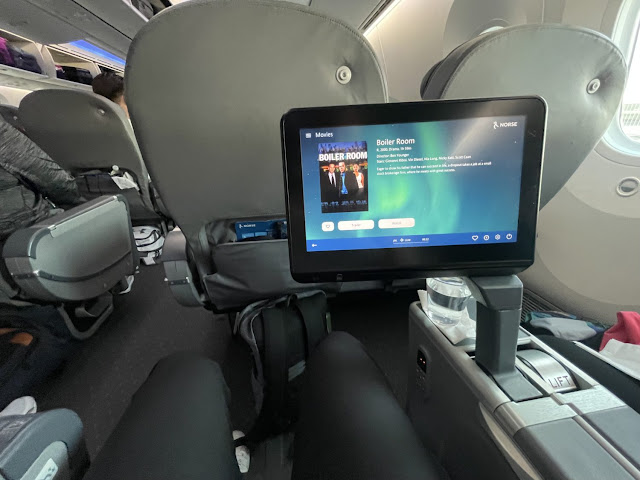











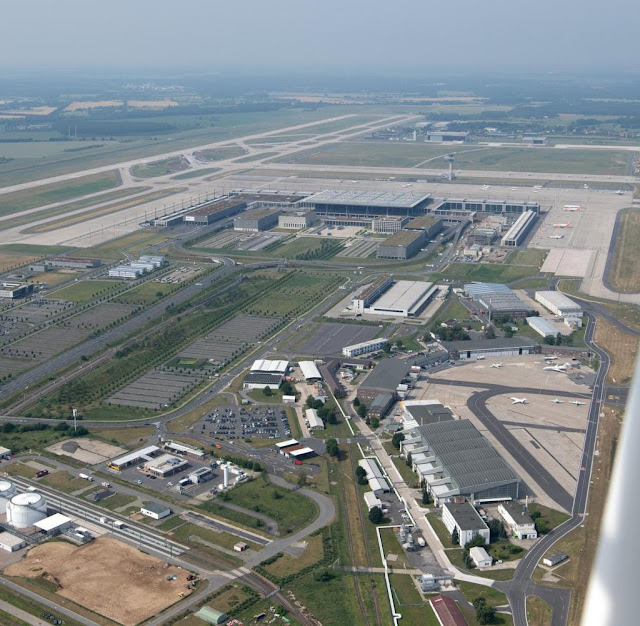


.jpg)






















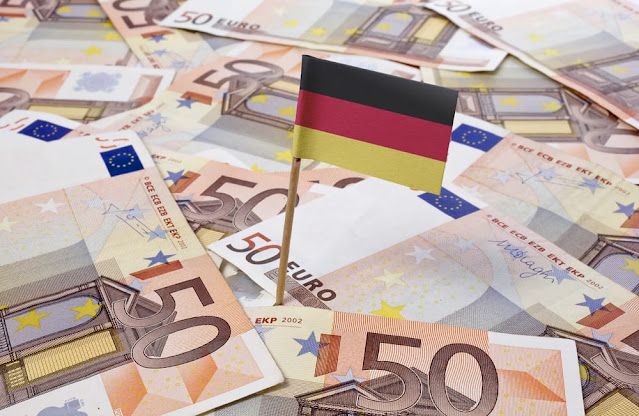

































































-1.jpg)



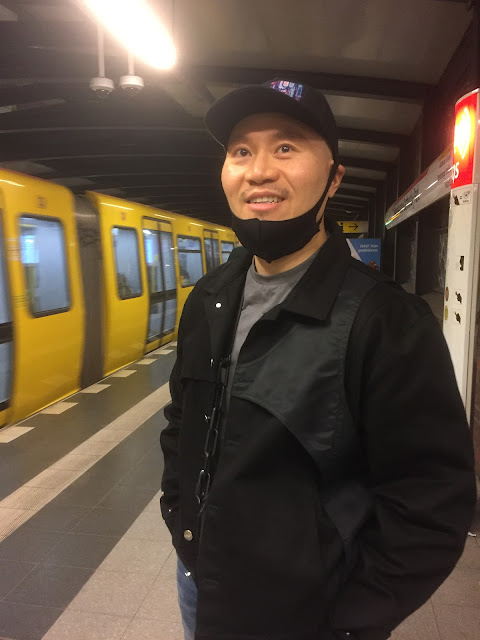













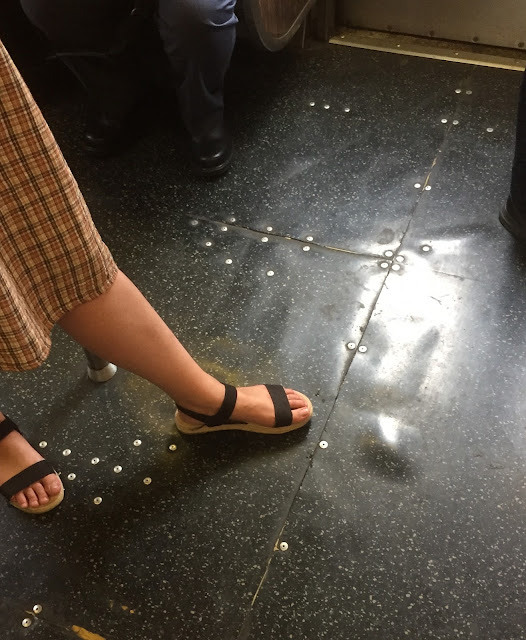






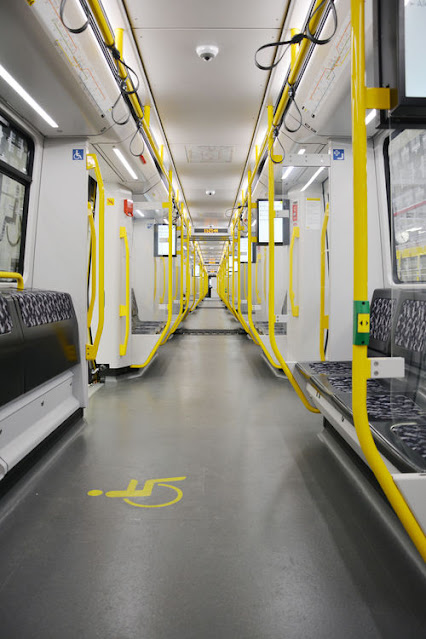




.jpg)





















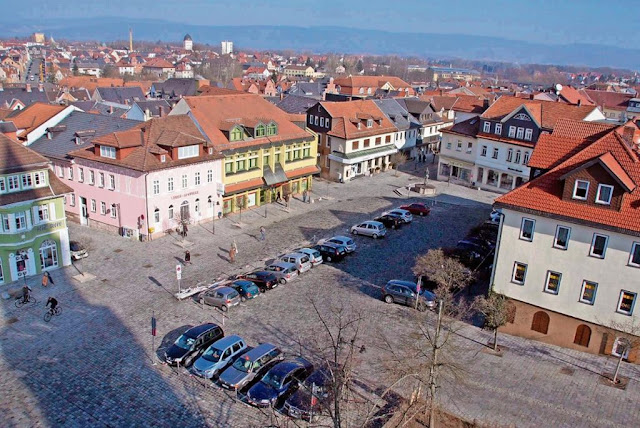

































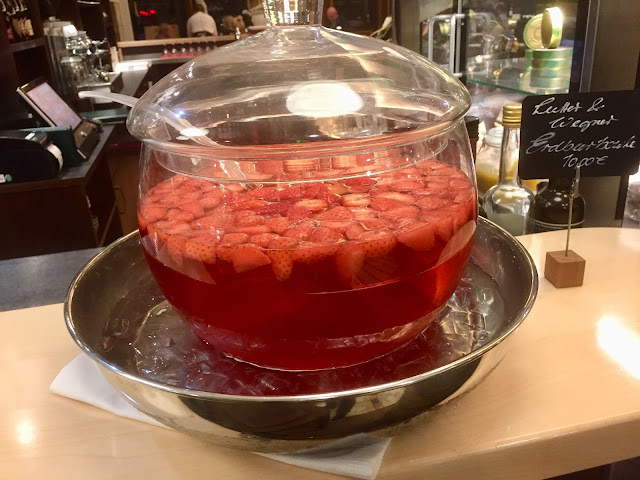







































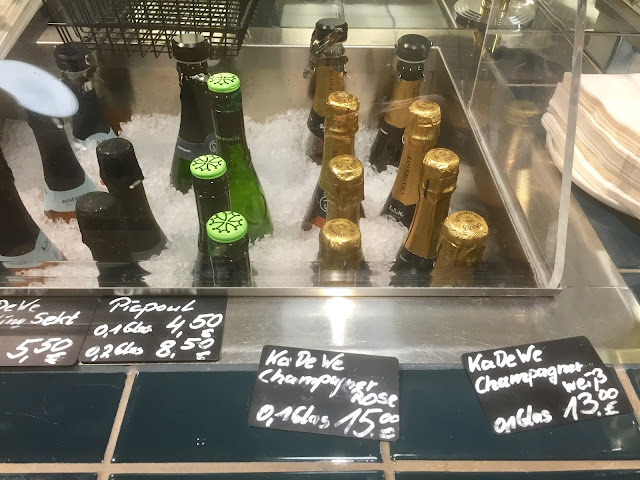

















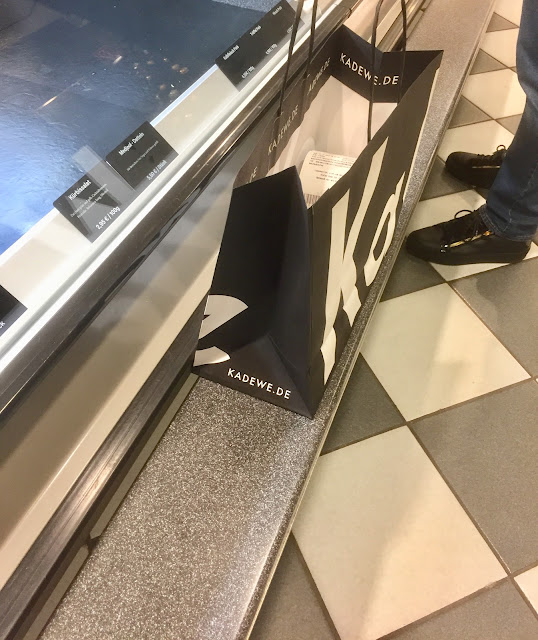






















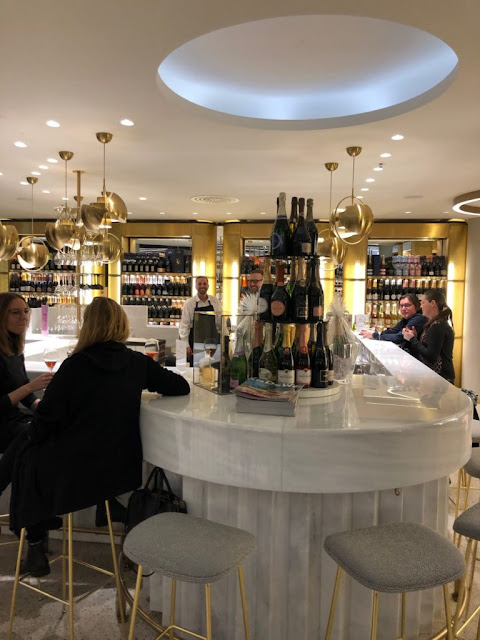













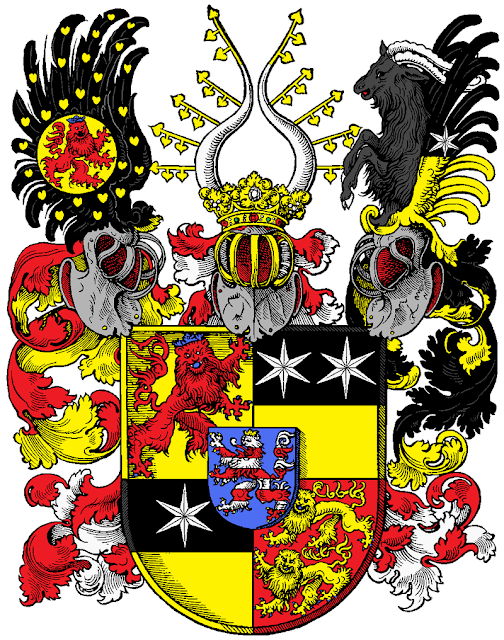





























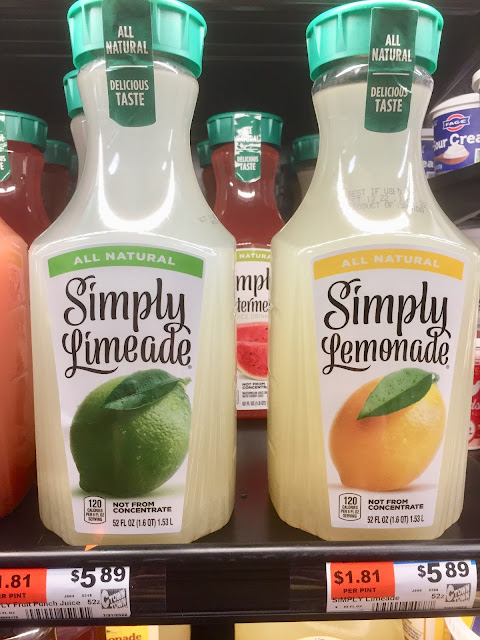




















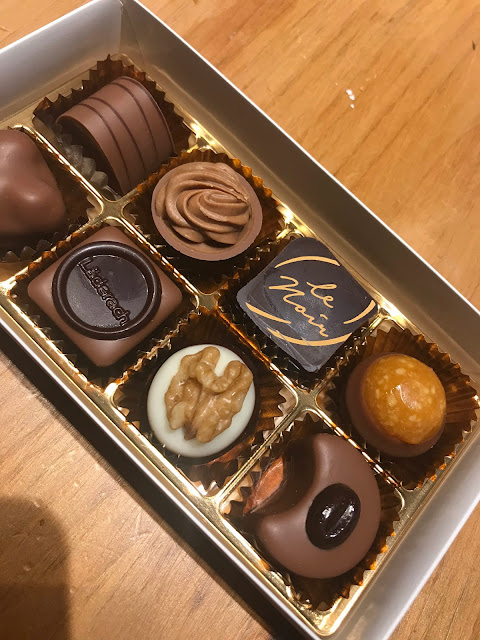
No comments:
Post a Comment
Don't be shy: leave your comments :)